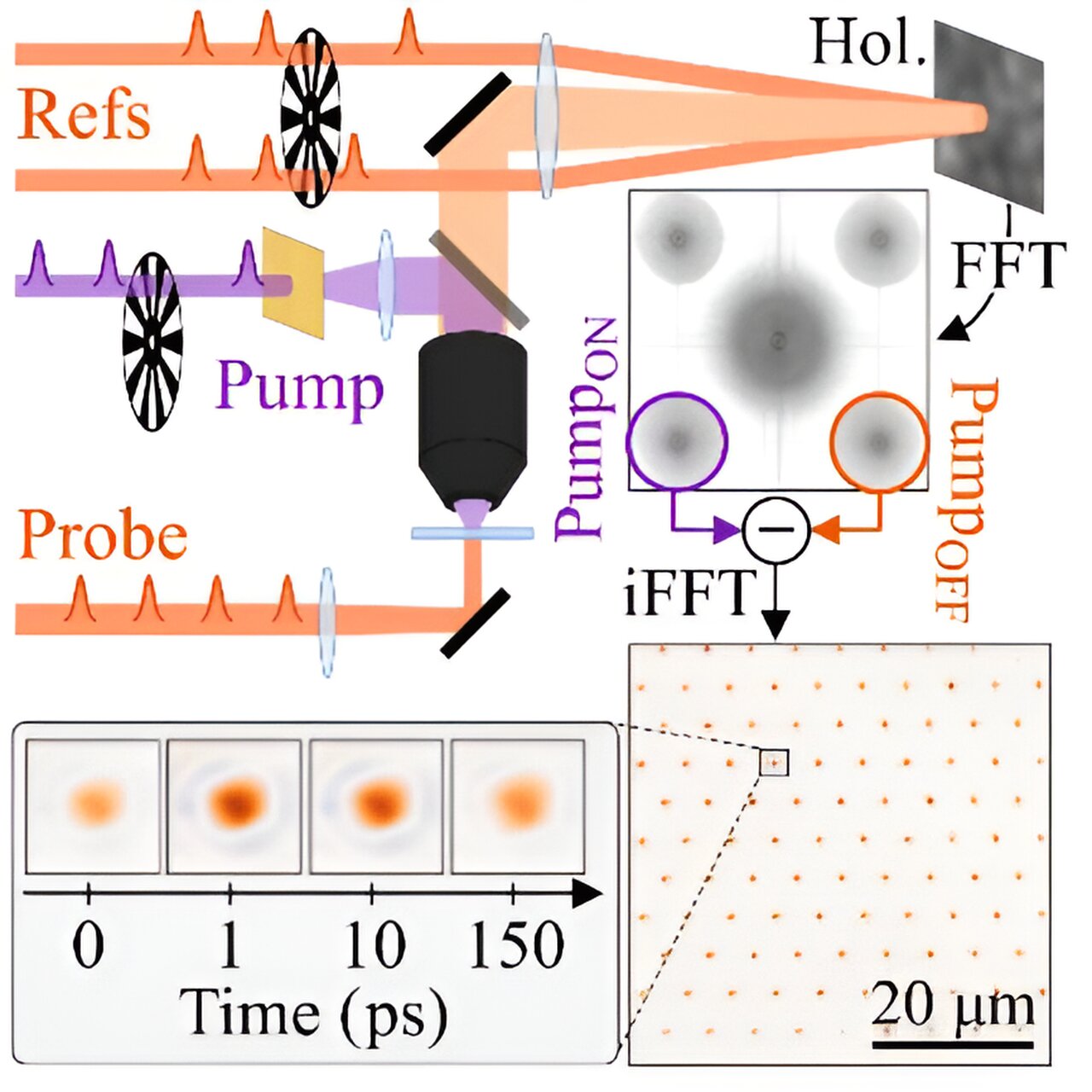Femtosecond transient microscopy is an important tool to study ultrafast transport properties of excited states in solid-state samples. Most implementations are limited to photoexciting a single diffraction-limited spot at the sample and tracking the temporal evolution of the ensuing carrier distribution, hence covering a very small sample area.
Recently, scientists from Italy and Spain have demonstrated how to vastly increase the field-of-view of ultrafast microscopes by using off-axis holography to build an all-optical lock-in camera, which decouples the signal demodulation speed from the maximum detector frame rate.
In this original work, published in Ultrafast Science, the researchers demonstrated the simultaneous transient imaging of dozens of individual nano-objects, where photoexcitation of the entire field of view was desirable. In the context of solid-state samples where diffraction-limited excitation is needed, it was not clear how the new holographic technique could be applied. Ideally, an array of diffraction-limited excitation spots covering the entire field of view would be generated, so that multiple spots across a large sample area can be simultaneously probed.
The article, “High-Sensitivity Visualization of Ultrafast Carrier Diffusion by Wide-Field Holographic Microscopy,” demonstrates how to accomplish this feature by imaging a pinhole array at the sample position. This is not only useful for obtaining statistical information on the photophysics of the sample, but also, for homogeneous samples, the signal of all spots can be averaged to vastly boost the signal-to-noise ratio.
More information:
Martin Hörmann et al, High-Sensitivity Visualization of Ultrafast Carrier Diffusion by Wide-Field Holographic Microscopy, Ultrafast Science (2023). DOI: 10.34133/ultrafastscience.0032
Provided by
Ultrafast Science
Citation:
High-sensitivity visualization of ultrafast carrier diffusion by wide-field holographic microscopy (2023, December 22)
retrieved 22 December 2023
from https://phys.org/news/2023-12-high-sensitivity-visualization-ultrafast-carrier-diffusion.html
This document is subject to copyright. Apart from any fair dealing for the purpose of private study or research, no
part may be reproduced without the written permission. The content is provided for information purposes only.

